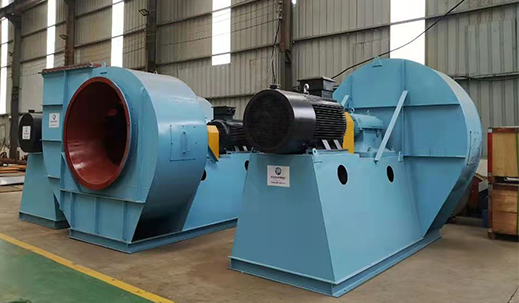 Centrifugal fans are widely used in various industries for ventilation, air conditioning, and air movement purposes. The rotational angle of the impeller, which is a crucial component of a centrifugal fan, plays a significant role in determining its performance and efficiency.
Centrifugal fans are widely used in various industries for ventilation, air conditioning, and air movement purposes. The rotational angle of the impeller, which is a crucial component of a centrifugal fan, plays a significant role in determining its performance and efficiency.
Design Parameters:
The design parameters of a centrifugal fan, such as the impeller diameter, blade shape, and blade pitch, have a direct impact on the impeller’s rotational angle. A larger impeller diameter tends to generate a higher rotational angle, as it provides a greater surface area for air to interact with. Similarly, blade shape and pitch affect the airflow pattern and pressure distribution, resulting in specific impeller rotation characteristics.
Motor Speed:
The rotational speed of the fan motor significantly influences the impeller’s rotation. The motor speed is typically measured in revolutions per minute (RPM) and can be adjusted to control the airflow rate. Higher motor speeds result in increased rotational angles, facilitating higher airflow volumes. Conversely, lower motor speeds lead to reduced rotational angles and lower airflow rates.
System Resistance:
The system resistance encountered by the centrifugal fan affects the impeller’s rotational angle. System resistance refers to the combined effect of factors such as ductwork design, filters, dampers, and any obstacles present in the airflow path. Higher system resistance requires the impeller to exert more force to overcome the resistance, leading to a larger rotational angle. Conversely, lower system resistance allows for smoother airflow and reduced impeller rotation.
Impeller Efficiency:
The efficiency of the impeller itself affects its rotational angle. A well-designed impeller with an optimized blade profile and minimal losses can achieve higher efficiencies. Inefficient impellers may require larger rotational angles to achieve the desired airflow rate. Factors such as blade surface smoothness, blade tip clearance, and blade material can impact the impeller’s overall efficiency and subsequent rotation.
Load Variation:
Changes in the operating conditions and load requirements can influence the impeller’s rotational angle. Centrifugal fans are often used in systems that experience varying airflow demands. When the system load increases, the impeller may rotate at a larger angle to meet the increased airflow requirements. Conversely, during periods of low demand, the impeller may rotate at a smaller angle to conserve energy.
Conclusion:
The rotational angle of centrifugal fan impellers is influenced by several factors, including design parameters, motor speed, system resistance, impeller efficiency, and load variation. Understanding these factors is crucial for optimizing the performance and efficiency of centrifugal fan systems. By considering these factors during the design and operation stages, engineers can ensure that the impeller rotation meets the desired airflow requirements while maintaining energy efficiency.

 Español
Español Русский
Русский Tiếng Việt
Tiếng Việt 中文
中文 suomi
suomi Français
Français Português
Português English
English Deutsch
Deutsch Français
Français Español
Español Italiano
Italiano Português
Português Pусский
Pусский


